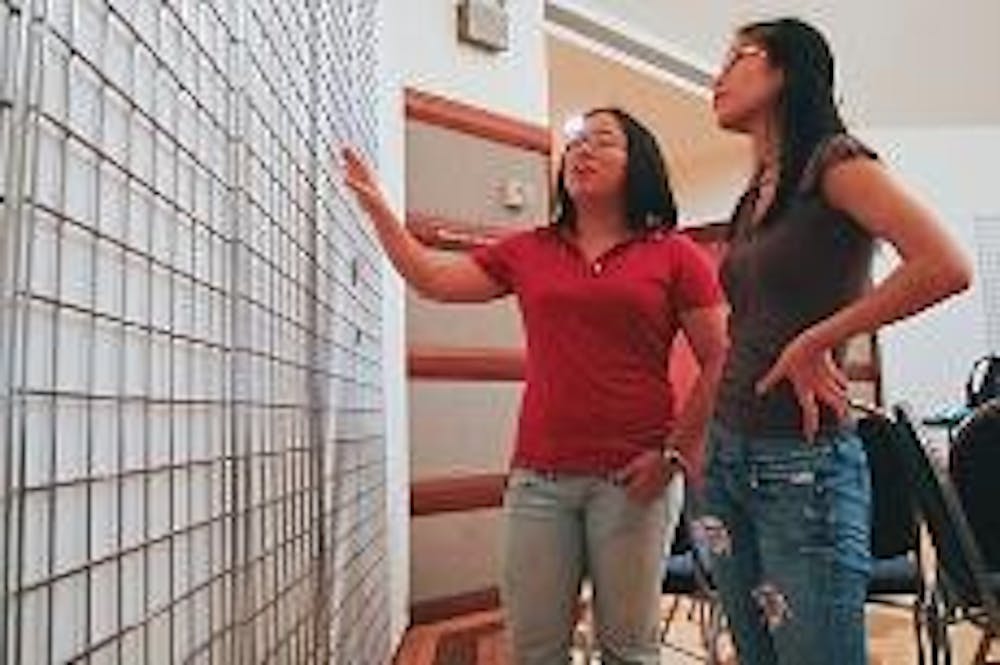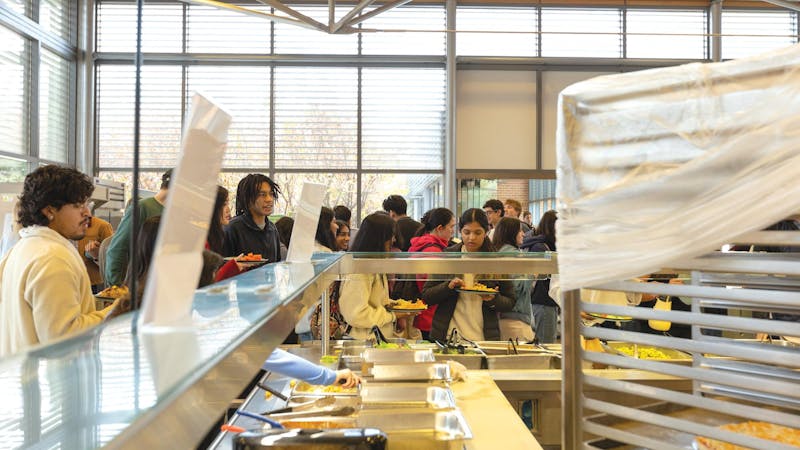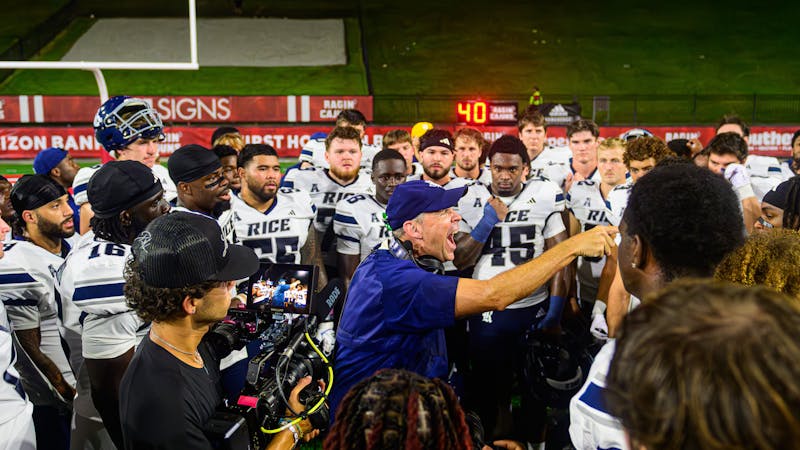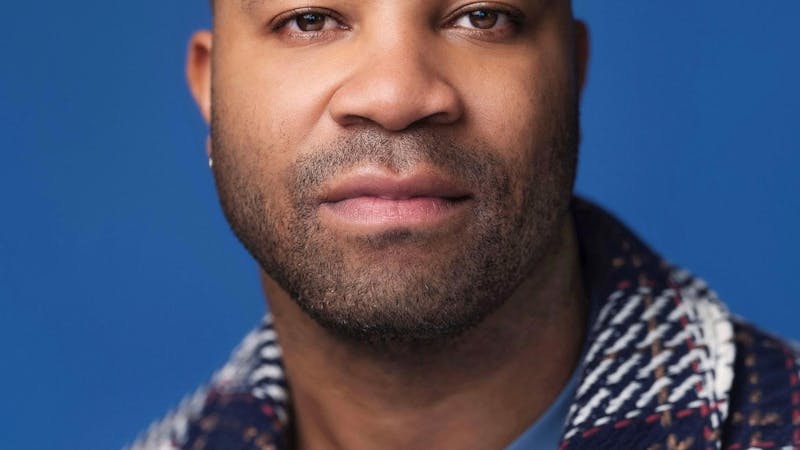Sprucing up the Pavilion

The walls are bare for now, but Lovett junior Teresa Lee (left) and Hanszen junior Amy Lin (right) both have big plans this year for the Farnsworth Pavilion Art Gallery, such as increasing its visibility and viability as another venue on campus for student artists to showcase their work.
Opened in 1986 as part of the Ley Student Center expansion, next to the existing Rice Memorial Center, the Farnsworth Pavilion Art Gallery has become best known as a meeting space. Home to countless luncheons, Student Association meetings, dance classes and other random events, few people think of it as a true art exhibition space, especially when there are already two established art venues at either end of campus in Sewall Hall's Rice Gallery and at the Rice Media Center.However, two students are out to change that perception. Hanszen College junior Amy Lin and Lovett College junior Teresa Lee have paired up as the Visual Arts Program Coordinators for the Student Center, responsible for any and all artwork you see hanging throughout the building, from the splatter paintings hanging by Disability Support Services to the "big polystyrene white thing near Coffeehouse." By increasing the amount of student artwork being put on display in Farnsworth this year, both Lee and Lin hope that they can in turn increase the visibility and viability of the pavilion as another venue for exhibits at Rice.
"In the past we've had a lot of traveling exhibits and exhibits coming from outside Rice," Lin said, "Now we want to put together themed art shows. Or, if any students are interested in curating a show, we could work with them on that as well. ... We kind of want to model ourselves after the student shows in the [Rice Media Center], not as competition, but just as more space and more opportunities for the artists on campus."
The Farnsworth Art Gallery's unique draw is that it is student-run, allowing its coordinators greater flexibility than in other spaces on campus. According to Lee, only the Visual Arts Coordinators and their adviser, Student Center Assistant Director of Programs and Marketing Erin Dement, get to choose and place the artwork, which is something they figure out on an individual basis with each artist.
Because of the amount of people coming in and out of the pavilion every day, and the need for different room configurations throughout the week to accommodate various meetings, the coordinators are often faced with some unique obstacles.
"Some artists come in and want to set up their artwork a certain way, and it's a little bit limiting because we have a certain number of walls and a certain combination of setups they can actually do," Lin said, adding that Farnsworth can only display two-dimensional art.
While these may seem like limit ing factors, Farnsworth enjoys more foot traffic than the Rice Gallery or the Rice Media Center, although the people may not always be there for just the artwork. "We've had people who use [Farnsworth] for non-art events, and they'll cover pictures they think are indecent, which is completely against their contract," Lee said.
The first exhibit the coordinators have planned for Farnsworth involves about 20 different artists and examines the different ways that Houston uses water. It doesn't have an official name yet, and will run for the month of October, but Lee made sure to point out that there is still plenty of space in Farnsworth's exhibit schedule. "As of now we have several months open, and exhibits last two to four weeks, so we're trying to populate that."
A Web site for the Farnsworth Pavilion Art Gallery is in the works, but if students are interested in getting more information about submitting their work or about the art gallery, they can e-mail either coordinator at Teresa.T.Lee@rice.edu or Huimiao.Lin@rice.edu.
More from The Rice Thresher

Over 1,000 students petition against new meal plan
When Konstantin Savvon opened the Housing and Dining email announcing the new unlimited meal plan, he was instantly concerned about the impact on off-campus students like himself.

Rice football wins season opener under new coach
For the first time since 2018, Rice football opened its season with a victory. Scott Abell was soaked with yellow Powerade following a 14-12 win on the road Saturday against the University of Louisiana at Lafayette, which won 10 games and made it to the Sun Belt Conference championship last season.

Acting like an athlete: Rice basketball alum takes on Broadway
Underneath Chadd Alexander’s Broadway costume, there’s ankle tape and wrist braces — same protective gear he wore as a walk-on basketball player at Rice, though now he’s performing eight shows a week in the ensemble of “Harry Potter and the Cursed Child” instead of running conditioning drills in Tudor Fieldhouse.

Please note All comments are eligible for publication by The Rice Thresher.